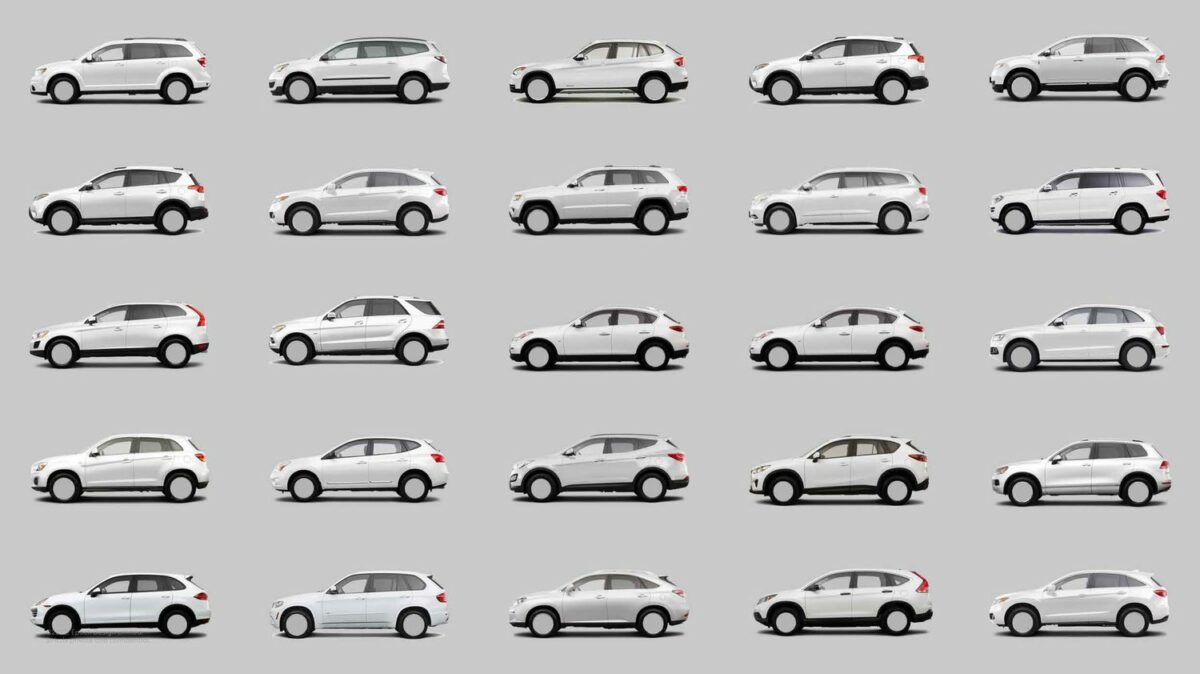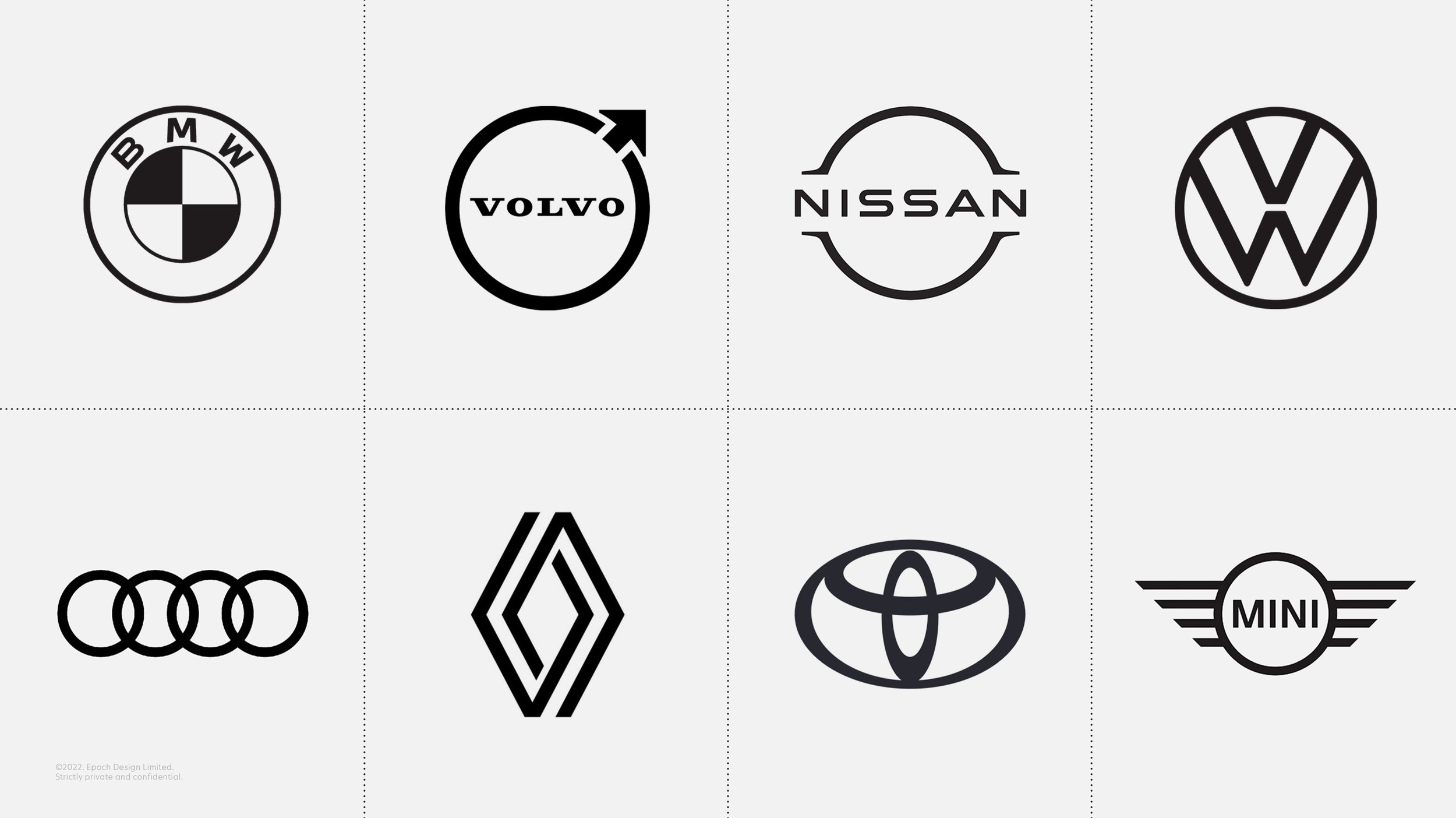Why Do All New Cars Look the Same?

Admit it – the majority of new cars look the same. Strip off the logos of all 2023 compact SUV‘s, and we’d bet you wouldn’t be able to tell the difference from a distance if they were all white and had their LEDs turned off.
But why is that? We came across an extremely interesting article which try’s to answer this question (and more boring modern car nuances). Here is the snippet about cars, but read the whole article as it dives into more modern civilization similarities:
Cars All Look the Same
(via The Age of Average by Alex Murrell)
In 2015, the ex-Chairman of BBH London, Jim Carroll recalled his realization 32 years earlier that aerodynamic tests had begun to make all cars look alike:
“Some of you will recall the day in 1983 when we woke up and noticed that the cars all looked the same. There was a simple explanation. They’d all been through the same wind tunnel. We nodded assent at the evident improvement in fuel efficiency, but we could not escape a weary sigh of disappointment. Modern life is rubbish.”
In Carroll’s opinion, because all vehicles underwent the same wind tunnel tests, manufacturers were independently converging on the same optimal set of forms, proportions and dimensions. And as a result, homogeneity in car design was increasing.
What Carroll didn’t realise was that things were about to get a lot worse.
Sat at a red light, Drew Magary took the opportunity to scope out some new car ideas. Suddenly he saw an SUV that looked attractive. But he couldn’t quite see the badge. Another car was blocking his line of sight:
“Maybe it’s a Bimmer,” I said to the dog. “It kinda looks like one.” It wasn’t. It was a Hyundai Santa Fe, which kinda resembles the Acura RDX, which kinda resembles the Volvo XC60, which kinda resembles the BMW X3. (…) These four models are all 75 inches wide, 66 inches high (save for the Volvo, which is 65), and they only differ in length by a maximum of three inches. They all have rear quarter windows smaller than a porthole on a submarine. They all have chrome accents to increase the glam factor by, like, five percent. And they all abhor right angles, (…). They’re spiritual clones, and they’re not exceptions in being so.”
But why do so many modern cars look the same?
Jim Carroll’s wind-tunnel theory is certainly one reason. Another is that the automotive giants increasingly share vehicle “platforms” between the many brands that they operate. And Ian Callum, who led design at Jaguar-Land Rover for two decades, provides a third theory.
“There was a time when you could identify the country the car came from. But today, basically every company makes cars for basically every country (…). Cars are now designed for the broadest possible audience, across the broadest number of countries, to be manufactured in the most efficient possible way.”
Callum continues:
“Before the typical car designer can even begin sketching out a model, they’re given specs from the packaging department (…). The measurements might vary within millimetres. These strict dimensions are agonisingly chosen to please the needs of the wind tunnel, to adhere to government safety regulations, to properly accommodate the average American family’s collective weight of 78,000 lbs., and to allow for enough cargo space for all their crap.”
These three theories explain why the three-dimensional design of cars has been converging over time. But they don’t explain why the colour of cars has converged as well.
According to data shared by Jökull Solberg, around 40% of cars sold in 1996 were monochromatic (black, white, silver or grey). 20 years later that figure had increased to 80%.
There are many suggestions for why this might be. Perhaps these colours come as standard and everything else is an optional upgrade. Perhaps brighter colours fade more quickly. Maybe people buy less vibrant colours when times are more turbulent. Maybe the resale market for monochromatic cars is more buoyant. Or maybe the paired-back design of smartphones informed stylistic trends in the auto industry.
Regardless, the result is the same. Where once carparks were a kaleidoscope of reds, blues and greens, today they capture a sea of desaturation.
And what’s more? The visual identities of car brands seem to be following suit. In September 2020, Vauxhall released a modernised, minimal marque. According to Henry Wong at Design Week:
“Vauxhall unveiled its new logo last week, a “confidently British” look, which reworks the griffin icon and introduces a blue-and-red colour scheme. Most prominent is its new flat styling — a simplified version of the logo’s previous 3D look. Vauxhall calls the redesign the “progressive face of the brand”.”

The “blanding” of automotive brand identities
Vauxhall had ditched a logo that looked like a chrome sculpted bonnet badge and replaced it with a flatter, thinner, altogether simpler execution. But they weren’t the only one. As Wong says, at least five other major manufacturers had charted a similar course:
“It’s a familiar story within car branding of late. Audi first unveiled a minimalist-inspired rebrand in 2018, but it’s been followed by a host of other marques in the past year. Volkswagen, BMW, Toyota, Nissan have all revealed new branding and each with a flat logo.”
So, the cars we drive, their colours and their logos have begun to converge upon a single style, but we’re also seeing the same trend occur in the way we look ourselves.
Read on here.


















